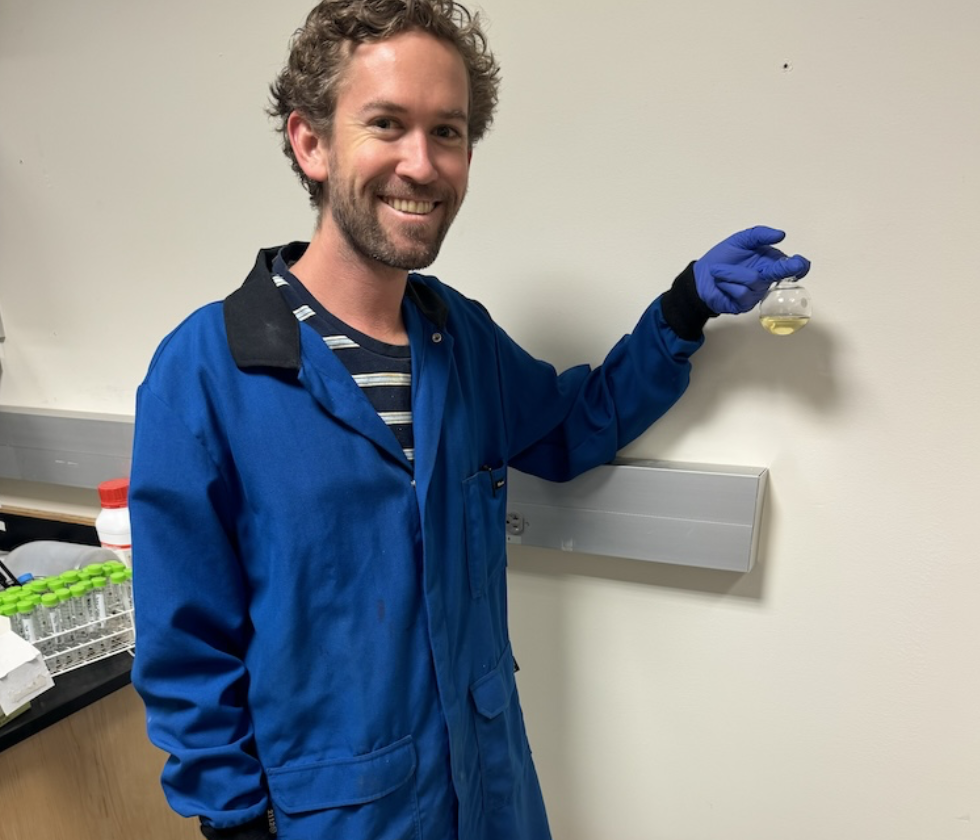Grease Lightning: UC Santa Cruz Reinvents Biodiesel
Most people see a tub of used cooking oil and think: “Gross.” A few might think: “Compost?” But a tiny handful of mad science geniuses at UC Santa Cruz see something else entirely: fuel. Like, actual diesel-grade, engine-vroom fuel.
Kevin Lofgren
And now, thanks to a surprisingly simple chemical trick—using sodium tetramethoxyborate (say that five times fast)—turning waste oil into biodiesel just got way easier. No giant refinery, no sky-high temperatures. Just a bit of warming (about 104°F, or a hot summer day in Fresno), some gentle stirring, and bam: clean-burning biodiesel in under an hour.
This isn’t science fiction. It’s real, peer-reviewed, and remarkably efficient. The UCSC team—led by chemistry PhD student Kevin Lofgren with professors Scott Oliver and Bakthan Singaram—discovered a low-toxicity, recyclable process that converts up to 85% of the oil into high-quality fuel. Bonus: the leftover chemical mixture can be reused, and the only cleanup needed is draining off a little glycerol byproduct. No messy separation dance required.
Why does this matter? Because it means small farms, restaurants, and even municipalities could make their own fuel with minimal equipment, lower emissions, and no need for fossil diesel. It's like giving waste oil a second life—as an eco-warrior.
Want the full breakdown with all the sciency goodness? Temperature curves, lab yields, and what this means for the future of sustainable fuels?
Read the full UCSC article here:
👉 https://news.ucsc.edu/2024/11/biodiesel-easier-process
Seriously, it's like discovering you can run your car on French fry juice—except it works.


